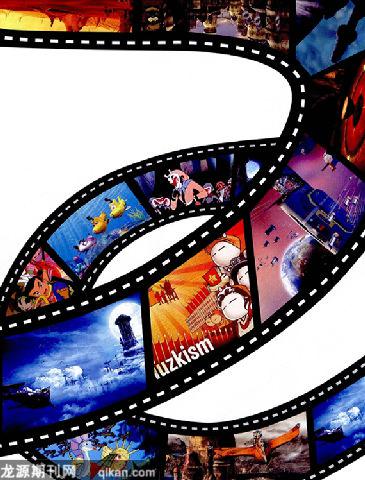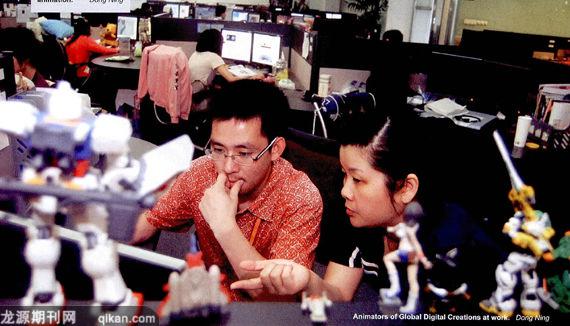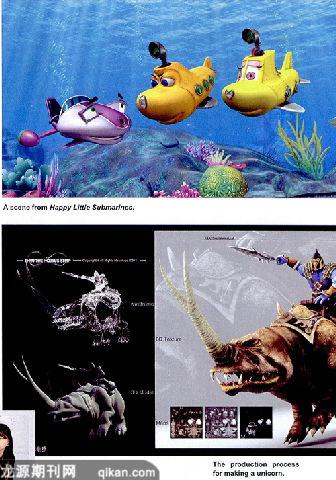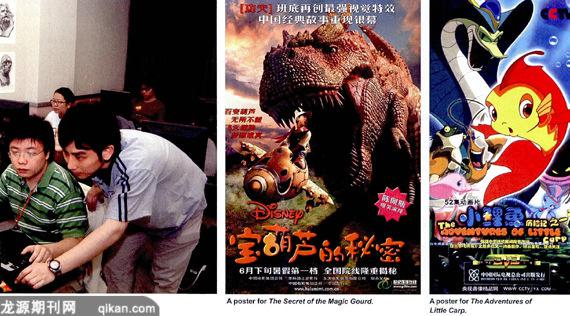Creating an Anima tion“Dream” Factory
2008-06-25staffreporterZHANGXUEYING
staff reporter ZHANG XUEYING
HAPPY Little Submarines, an American-style animation entirely produced by a Chinese studio, was shown in late May at more than 200 digital cinemas around the country. It is one of the few feature-length animated films made and successfully released in China in the past 20 years. “This is the first time we have recouped our investment before the distribution of the film through foreign copyrights,” said Jin Guoping, chairman of the Institute of Media Technology (Shenzhen) Ltd., affiliated with Global Digital Creations (GDC).
The film tells of two small submarines, “Ali” and “Beibei,” who after undergoing countless hardships at sea, finally realize their dream of becoming official scientific research submarines. It is targeted at young children and cost RMB 10 million, but beyond breaking even, Jin said he did not expect too much in box office receipts. “The box office of films for young children is limited, especially in China. The animation consuming market is by no means mature,” he said.


Five Years to Realize a “Dream”
“China has countless talented animators,
and we are confident that we can compete with American film studios in terms of animation quality,” said Liang Dingbang.
Two years ago, GDCs animation Thru the Moebius Strip met its waterloo in global distribution, and its RMB 150 million investment, in Managing Director Chen Zhengs words, “was a total write-off.” Losing such a huge sum is usually fatal to a Chinese animation company. The company declared bankruptcy and the top management was replaced.
“Although Thru the Moebius Strip failed, it reflected our dreams,” said Cao Hui. At the time, the 21-year-old was a recent management graduate. She had loved painting since early childhood, but knew nothing about the application of 3-D software. She joined Global Digital Creations with the dream of “creating the best animations in China,” and took part in one year of professional training under well-known animation designers from Hollywood.

“Back then, at least half of us were art lovers like me. No one in our company had any experience in filmmaking. We never expected that animation would be such a complicated thing, and it is even more difficult to make full-length animated films,” Cao said.
By the end of the 20th century, only one college in China had courses in animation, graduating less than 1,000 graduates annually. Because salaries were low and hopes for success slim, only one-tenth of the graduates entered the animation industry.
In 2000, Liang Dingbang, then chairman of the board of directors, decided to make an animated film as good as Final Fantasy: the Spirits Within, a Hollywood film released that year. It was not long after the founding of Global Digital Creations. “China has countless talented animators, and we are confident that we can compete with American film studios in terms of animation quality,” said Liang Dingbang. “Compared with American production costs, if they produce one film, we can produce five.”
On average, the current production cost of a Chinese-made animation is RMB 15,000 per minute, while the world average is RMB 80,000. Liang Dingbang invited Glenn Chaika, animation designer of Walt Disneys The Little Mermaid; Bob Koch and Kelvin Lee, veteran animation designers of films like Toy Story and Stuart Little; and Manny Wong, senior crowd technical director of The Day After Tomorrow, as supervisors on the film Thru the Moebius Strip.

But no one told the GDC staff what an international-level animation film studios culture and management were like. “At first, GDC was structured according to a 2-D animation format and divided into three groups – model, material and animation. Then the staff got to know the division of work from the list of crew at the end of Final Fantasy: the Spirits Within. After a years study, the 400-member staff was divided into 16 departments in accordance with the production procedures for 3-D films,” recalled Cao.
The 90-minute film took five years to complete. “In the first two years, we could not even complete a three-minute film. A 20-minute film that took months to make was shelved without ceremony. Even had it gone forward, it would have been altered 20 to 30 times. Angst and all-night work sessions were common,” she said. Now she has become the backbone of the company, serving as its deputy general manager. “In five years, we have attained an international level from laymen.”
In 2005, Liang Dingbang spent his last penny, and sold Thru the Moebius Strip, which was not yet finished, together with the company. “We did not expect that film to score at the box office like Finding Nemo and Monsters, but we did hope it would serve as a catalyst to promote the development of this new industry in China,” Liang said.
Submerged Reefs
The government began to actively develop Chinas animation industry, and a series of policies testified to its attitude and determination.
Beginning in 2002, the government began to actively develop Chinas animation industry, and a series of policies testified to its attitude and determination. Between 2004 and 2005, the government approved the establishment of 19 animation production and research centers, awarding prizes for outstanding cartoon films and exempting the industry from taxes.
In 2006, the government expanded the proportion of Chinese animated films being shown on television, reserving the 5:00 p.m.-8:00 p.m. slot every evening for Chinese-made animation. In 2008, the three-hour period was extended to four. Although industry leaders and researchers still debate the impact of that rule, the Radio, Film and Television Administration, which oversees the animation industry, has its own theory.

Hu Zhanfan, deputy chief of the administration, said, “The success of Chinese-produced television dramas is attributable to such rules. Therefore, we have reason to believe that Chinese-made animated films can follow suit in the future.”
Certain figures seem to support that contention. At the end of 2006, China had 5,473 animation enterprises and 34 animation TV channels. Statistics from the Radio, Film and Television Administration show that in 2007, China made 186 animated films, totaling 101,900 minutes. Two years earlier, the output was only half that figure.
